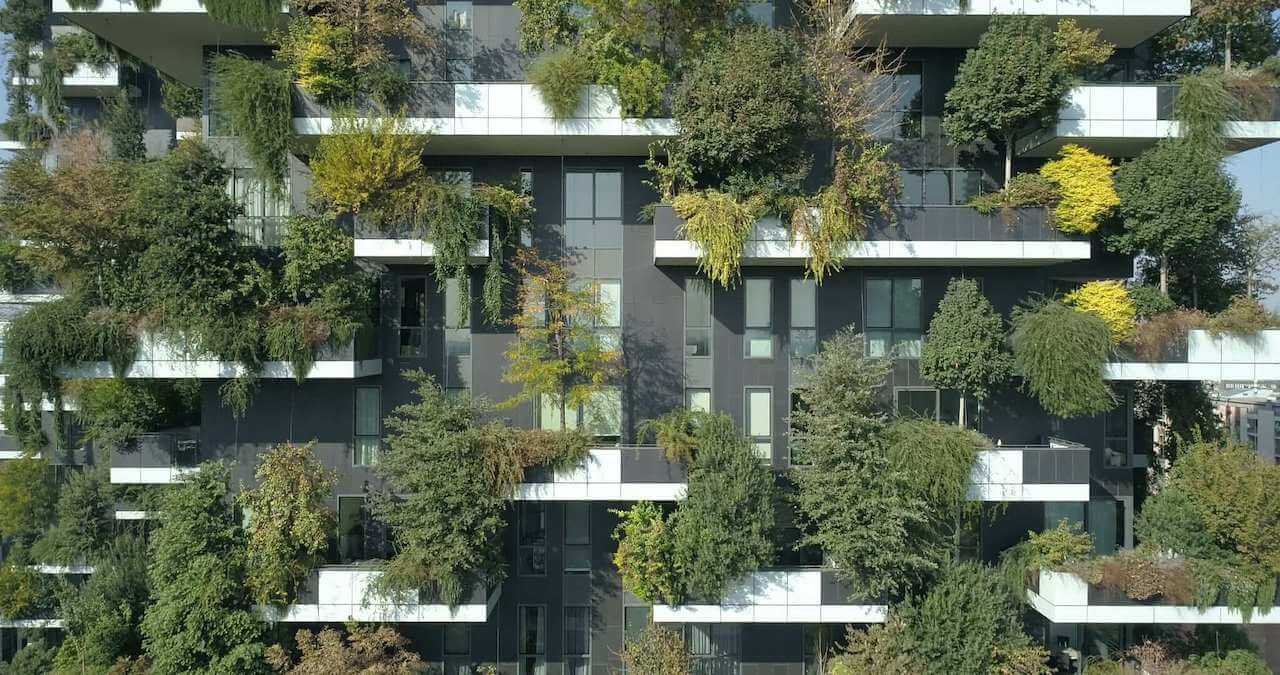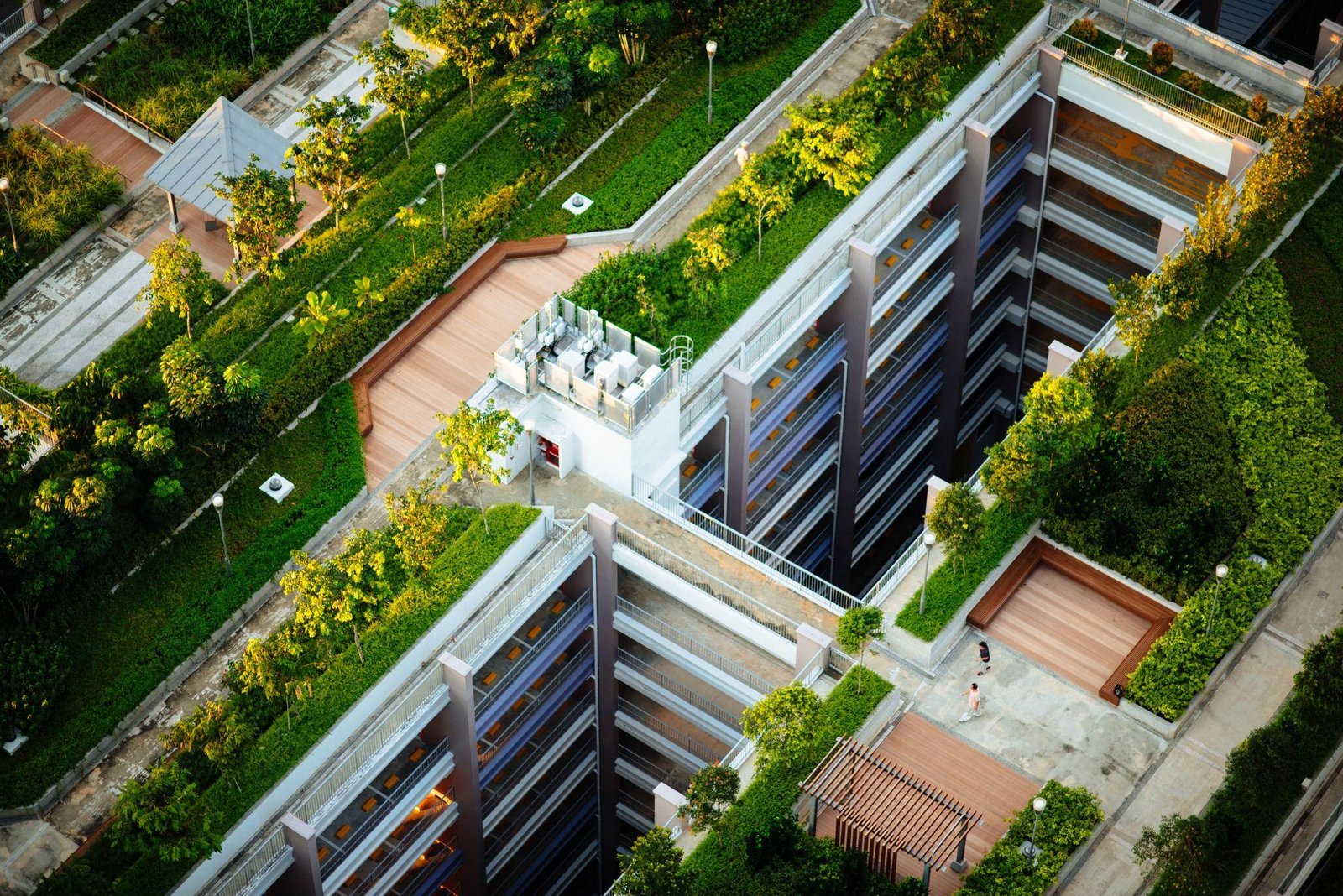Biophilic design principles in urban architecture
Biophilic design seeks to reconnect urban dwellers with nature by incorporating natural elements, patterns, and processes into the built environment. In urban settings, integrating biophilic design principles not only enhances aesthetic appeal but also promotes sustainability and improves quality of life. Here’s how biophilic design is shaping urban architecture.
1. Integration of Natural Elements
Enhancing Connectivity:
- Living Walls and Green Roofs: Incorporating vertical gardens and vegetated rooftops to improve air quality, reduce urban heat island effect, and provide habitats for wildlife.
- Water Features: Introducing fountains, ponds, or rain gardens to manage stormwater runoff and create soothing urban oases.
2. Maximizing Natural Light and Views
Wellness Benefits:
- Daylighting Strategies: Designing with large windows, skylights, and light wells to maximize natural light penetration and reduce reliance on artificial lighting.
- Outdoor Views: Providing vistas of green spaces, parks, or urban forests to enhance visual connections with nature and improve psychological well-being.
3. Incorporation of Natural Materials
Sustainable Choices:
- Wood and Timber: Using sustainably sourced wood for flooring, cladding, and structural elements to create warm and inviting interiors.
- Stone and Earth: Utilizing natural stone, clay, or rammed earth for their durability, thermal mass properties, and aesthetic appeal.
4. Biomorphic Forms and Patterns

Inspired by Nature:
- Organic Shapes: Designing buildings with curved facades, flowing contours, and biomimetic structures that mimic natural forms and enhance visual interest.
- Pattern Variations: Incorporating textures, motifs, and fractal patterns found in nature to create sensory-rich environments that evoke a sense of calm and comfort.
5. Urban Biodiversity and Habitat Creation
Ecological Enhancement:
- Green Corridors: Establishing interconnected green spaces, wildlife corridors, and urban forests to support biodiversity and promote ecological resilience.
- Native Plant Landscaping: Planting native species that require less water and maintenance, fostering habitat diversity for pollinators and wildlife.
6. Multi-sensory Experiences
Stimulating the Senses:
- Aromatherapy Gardens: Designing fragrant gardens with aromatic plants to enhance air quality and stimulate olfactory senses.
- Soundscaping: Incorporating natural sounds like running water, wind rustling through leaves, and birdsong to mask urban noise and promote relaxation.
7. Biophilic Urban Planning and Community Design
Inclusive Environments:
- Public Parks and Plazas: Creating accessible green spaces that serve as gathering places for social interaction, recreation, and cultural activities.
- Pedestrian-Friendly Streets: Designing walkable neighborhoods with tree-lined streets, bike paths, and outdoor seating areas to encourage active lifestyles and reduce car dependence.
8. Wellness and Productivity Benefits
Health and Performance:
- Stress Reduction: Providing environments that reduce stress, anxiety, and mental fatigue through exposure to natural elements and views.
- Enhanced Cognitive Function: Improving concentration, creativity, and productivity levels among residents, workers, and visitors in biophilic environments.
9. Climate Resilience and Sustainability
Environmental Stewardship:
- Heat Island Mitigation: Using vegetation, reflective surfaces, and cool materials to mitigate urban heat island effects and improve microclimate conditions.
- Resource Efficiency: Optimizing energy use, water consumption, and waste management practices through biophilic design strategies.
10. Educational and Inspirational Opportunities
Public Awareness:
- Educational Signage: Incorporating signage, exhibitions, and interactive displays that educate the community about biophilia and sustainable urban living.
- Demonstration Projects: Showcasing successful biophilic design implementations to inspire future urban developments and policy initiatives.
Conclusion
Biophilic design principles offer a transformative approach to urban architecture, fostering sustainable, resilient, and livable cities that prioritize human well-being and ecological balance. By integrating nature-inspired elements, maximizing natural light and views, and promoting urban biodiversity, architects can create environments that enhance quality of life, promote health, and strengthen community connections with the natural world. As cities continue to grow and evolve, biophilic design represents a promising pathway towards creating sustainable urban environments that harmonize with nature and support thriving communities.



